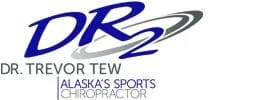Backpacks are the tote of choice for most school-aged children with two books per class to lug around. In fact, it is reported that between 92% and 94% of schoolchildren carry backpacks. And it appears these contraptions are evolving somewhat with sturdier-looking designs, heavily padded straps and about a thousand small pockets for pencils, house keys and other knick-knacks. But even though the sturdiest backpacks can withstand the pressure, how are the kids taking it?
On average, children load their backpacks to between 10% and 22% of their own body weight. During a study conducted in 2005, researchers set out to quantify the pressure and pain incurred when backpacks are loaded so heavily. For the study, 10 children wore backpacks loaded to 0%, 10%, 20% or 30% of their body weight for 30 seconds to determine the amount of pressure under the backpack's shoulder straps. While wearing the backpacks, the children were also asked to report whether they felt any pain and, if so, the severity of that pain.
According to the results, pressure beneath the shoulder straps was "significantly increased" when the backpack was loaded at only 10% of the child's body weight - on the low end of the reported average. Increased pressure also was associated with an increase in pain, and interestingly the pressure was always greater on the right shoulder than the left shoulder. Over the long term, the researchers noted that uneven backpack loads could alter the curvature of a child's spine and produce back pain.
The authors of this study compiled their results and offered a few suggestions for parents of school-aged children and their parents:
- Backpacks should be positioned high on the back.
- Backpack straps should be worn over both shoulders.
- Weight in the backpacks should be minimized.
- Backpacks should have wide shoulder straps.
It is important to remember that 3 out of every 100 people have some degree of scoliosis - an abnormal curvature of the spine - that begins in childhood and has the potential to worsen over time. Having your child evaluated by a chiropractor is the best way to determine whether he or she has some degree of scoliosis. Chiropractic care can manage any problems related to scoliosis, and a lightened load on their back can have long-term benefits as well!
